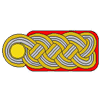Quoted Text
Not a big Churchill fan, And not an “expert” by any means, but I am a Crocodile fan, having scratchbuilt an interior for my Tamiya Crocodile, which subsequently earned a 1st place award for closed top tracked armored vehicles at a local IPMS show several years ago. We also have a Crocodile at our local Flying Heritage and Combat Armor Museum, owned by the late Paul Allen. Sadly the FHCAM Museum is now closed, with no information on re-opening, if any. But I did a lot of “Churchill” research when building my Crocodile.
My reason for interjecting in this conversation is to clarify the purpose of the removed fenders adjacent to the turret. These were removed by the crews, because they had a tendency to buckle when hit with a round, and would fold up and jam the turret. As far as external stowage, Churchill crews seem to have kept stowage at a minimum, to keep the vehicle ready for action. Mostly on the rear fenders rather than engine deck, and there are two “flimsy” racks on the lower rear fenders, which were also used to carry cargo. The Crocodile trailer roof was used occasionally for stowage, especially for tarps and fuel related items. The Tamiya kit is a late Mk VII, a type that did not see a lot of action in 1944, except for the Crocodile. The earlier Mark AFV club kit is probably best suited to depict Churchills in France in 1944 (other than Crocodiles).
Just another note, the Fruil Mk VII track set is fabulous (but expensive), and will really lend a touch of realism to any Mk VII build. Removing the fenders around the turret is quite an undertaking on the Tamiya kit, as it will expose the empty interior, you’ll have to do some surgery with sheet styrene to patch up the holes, but it’s worth it, and will build into a unique model. Check the internet for photos, as I recall, there’s a “Churchill” web site dedicated specifically to the tank, with lots of photos, but I can’t recall the name.
VR, Russ
Hi Russ,
Thank you for taking the time to respond in detail,

.
The information regarding stowage mainly being located on the mud/track guards pretty much ties-in with some of the images I have seen thus far.
I had toyed with the idea of removing the central mud/track guards, but chickened-out as I do not have the modelling skills to undertake any serious conversions...plus it was difficult to find images showing what would be seen if they were removed.
I will see if I can find the Churchill site you mentioned.
As to aftermarket tracks, and suchlike...being a recent returnee to the hobby after a four decade hiatus...I have to be honest and say that I baulk at the cost of some of the super-detailing products you can purchase. And, in all honesty, I doubt their use would be much of an improvement on my limited capabilities,

, but thanks for the suggestions,

.
Thanks again, and cheers,

,
G
 ,
,



















